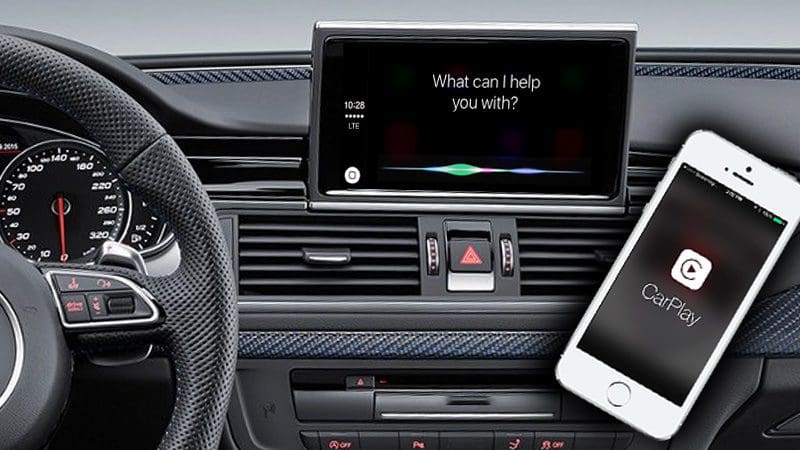 Apple CarPlay and Android Auto smartphone integration systems are extremely popular features found in aftermarket source units from all the key brands. The technology behind CarPlay and Android Auto continue to evolve, and in the summer of 2017, the aftermarket industry saw the introduction of wireless CarPlay connectivity. Android followed suit in 2018 with a comparable solution that didn’t require cables. Let’s take a look at how wireless smartphone integration works and why it might be the perfect solution for the busy road warrior.
Apple CarPlay and Android Auto smartphone integration systems are extremely popular features found in aftermarket source units from all the key brands. The technology behind CarPlay and Android Auto continue to evolve, and in the summer of 2017, the aftermarket industry saw the introduction of wireless CarPlay connectivity. Android followed suit in 2018 with a comparable solution that didn’t require cables. Let’s take a look at how wireless smartphone integration works and why it might be the perfect solution for the busy road warrior.
How Do CarPlay and Android Auto Work?
 These infotainment solutions require two components to provide you with Internet-connected voice recognition access to your music, navigation and communication functions. First and foremost, the source unit in the vehicle needs to have the software built in. Including CarPlay and Android Auto in a multimedia receiver is a massive undertaking for a radio manufacturer. More so on the Apple side, because there are very strict and specific requirements for display size, interface design, processor speed and hardware components. The goal is to ensure that the experience for you, the consumer, is a good one. It can take several years of design, testing and approvals to bring a new radio model to market.
These infotainment solutions require two components to provide you with Internet-connected voice recognition access to your music, navigation and communication functions. First and foremost, the source unit in the vehicle needs to have the software built in. Including CarPlay and Android Auto in a multimedia receiver is a massive undertaking for a radio manufacturer. More so on the Apple side, because there are very strict and specific requirements for display size, interface design, processor speed and hardware components. The goal is to ensure that the experience for you, the consumer, is a good one. It can take several years of design, testing and approvals to bring a new radio model to market.
When you want to make a phone call or pick music to enjoy, you activate the voice recognition function on your radio and verbally request what you want. The radio will relay a digital recording of your request to the Apple or Google voice recognition servers using your phone’s Internet connection. The server will analyze the message and translate that into a command or sequence of commands that are sent back to your phone. Your phone will execute the command and display the outcome on your radio.
 Up until recently, the connection between your phone and the radio for CarPlay and Android Auto has used a USB cable. With the introduction of wireless connectivity, things have changed. A Wi-Fi connection between your source unit and your smartphone replaces the wired connection for reliable, high-speed communication. Initially, a little more setup is required to get your smartphone and radio talking, but once configured, everything operates intuitively.
Up until recently, the connection between your phone and the radio for CarPlay and Android Auto has used a USB cable. With the introduction of wireless connectivity, things have changed. A Wi-Fi connection between your source unit and your smartphone replaces the wired connection for reliable, high-speed communication. Initially, a little more setup is required to get your smartphone and radio talking, but once configured, everything operates intuitively.
Wireless Apple CarPlay
Contrary to some reports that claim wireless CarPlay started with iOS 9, this functionality launched with the introduction of iOS 8.3 in April 2015. It was several years before anyone had a viable and tested application on the road. Remember our comment about development and testing time?
Wireless Android Auto
 In November 2017, Google announced the ability for devices running Android to run Android Auto as a stand-alone app without the need for an aftermarket source unit. At CES 2018, several aftermarket manufacturers announced they would include wireless Android Auto connectivity on their new source units.
In November 2017, Google announced the ability for devices running Android to run Android Auto as a stand-alone app without the need for an aftermarket source unit. At CES 2018, several aftermarket manufacturers announced they would include wireless Android Auto connectivity on their new source units.
At the time of launch, only smartphones from Google themselves would work with wireless Android Auto. These phones include the first- and second-generation Google Pixel and Pixel 2, the Nexus 5X and the Nexus 5P. Rumors began circulating in the summer of 2018 that some devices running the Oreo version of the Android operating system (Android 8.1) may become compatible with wireless Android Auto in the future. These rumors also include speculation that devices running Android P (the next version of Android, presumably called Android 9) will support wireless connectivity with more devices.
Do You Need Wireless Smartphone Connectivity?
 There are have been many discussions about the benefits and drawbacks of wireless connectivity. The biggest point of debate is around phone charging. In most cases, drivers take advantage of the ability to charge their phones when they get in their vehicles as they travel. For most people, this requires that the USB cable is connected to their phone. With that said, the Apple iPhone 8, 8 Plus and X include wireless charging. On the Android side, recent devices from Samsung, LG, Google, Microsoft and Blackberry include wireless charging.
There are have been many discussions about the benefits and drawbacks of wireless connectivity. The biggest point of debate is around phone charging. In most cases, drivers take advantage of the ability to charge their phones when they get in their vehicles as they travel. For most people, this requires that the USB cable is connected to their phone. With that said, the Apple iPhone 8, 8 Plus and X include wireless charging. On the Android side, recent devices from Samsung, LG, Google, Microsoft and Blackberry include wireless charging.
 Flipping back to the cons side of the debate, you need a wireless charging base in your vehicle to take advantage of the wireless charging feature. Vehicles from Audi, BMW, Chrysler, Ford, Honda, Mercedes-Benz, Toyota, Volkswagen and Volvo include Qi compatible charging solutions. Qi is the standard for wireless charging for Apple devices.
Flipping back to the cons side of the debate, you need a wireless charging base in your vehicle to take advantage of the wireless charging feature. Vehicles from Audi, BMW, Chrysler, Ford, Honda, Mercedes-Benz, Toyota, Volkswagen and Volvo include Qi compatible charging solutions. Qi is the standard for wireless charging for Apple devices.
Don’t fret: Several aftermarket suppliers, including Scosche, Belkin, Autoleads and Brandmotion offer wireless charging solutions that a mobile enhancement retailer can integrate with your vehicle.
A Simple Way to Stay Connected
If you are in and out of your vehicle often during the day, wireless smartphone connectivity, just like Bluetooth, is an ideal solution to get you connected quickly and easily. Without a way to charge your phone, you will want to keep an eye on the battery level, especially on long drives. To find out about the wireless smartphone connectivity and charging options that are available for your car, truck or SUV, drop by your local mobile enhancement retailer today and speak with one of their product experts.
This article is written and produced by the team at www.BestCarAudio.com. Reproduction or use of any kind is prohibited without the express written permission of 1sixty8 media.
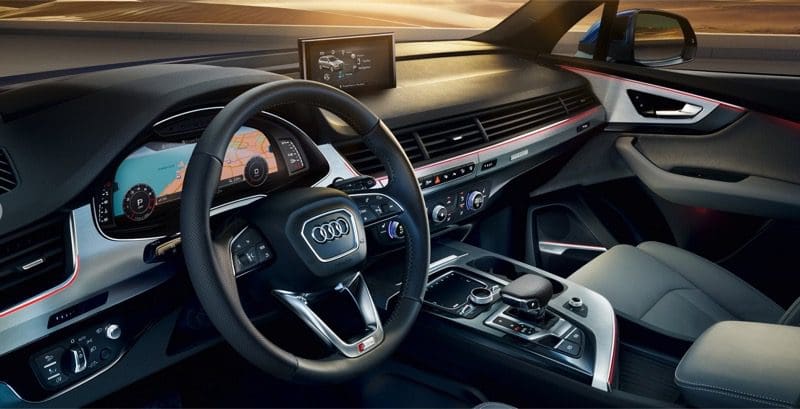 Did you know that you can get great sound in your car or truck using your
Did you know that you can get great sound in your car or truck using your 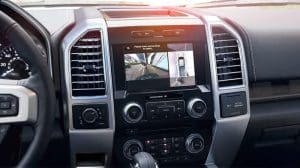 Fewer and fewer cars today have radios that only play music. They show
Fewer and fewer cars today have radios that only play music. They show  In the good old days, factory audio systems included a radio, a simple analog amplifier and speakers. If you had a luxury vehicle, the manufacturer may have opted to include a subwoofer for a little more (but still not enough) bass. The radio was a simple affair with a tuner, CD player, auxiliary input and maybe a USB port and satellite radio connection. The output of the radio either powered the speakers in the car directly or fed a signal to a small amplifier.
In the good old days, factory audio systems included a radio, a simple analog amplifier and speakers. If you had a luxury vehicle, the manufacturer may have opted to include a subwoofer for a little more (but still not enough) bass. The radio was a simple affair with a tuner, CD player, auxiliary input and maybe a USB port and satellite radio connection. The output of the radio either powered the speakers in the car directly or fed a signal to a small amplifier.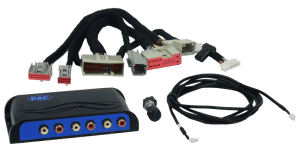 Let’s look at three common upgrades that mobile electronics retailers across the nation perform every day. Since 2009, the Ford F-150 has come equipped with an amplifier in the back of the truck that includes the master volume control for the system as well as equalization and crossovers for the speakers. Upgrading this popular vehicle required summing audio signals coming out of the amp back together and removing signal processing.
Let’s look at three common upgrades that mobile electronics retailers across the nation perform every day. Since 2009, the Ford F-150 has come equipped with an amplifier in the back of the truck that includes the master volume control for the system as well as equalization and crossovers for the speakers. Upgrading this popular vehicle required summing audio signals coming out of the amp back together and removing signal processing. Another popular audio system upgrade interface is the iDatalink Maestro DSR1. Automotive Data Solutions partnered with the audio experts at Rockford Fosgate to develop this interface and tuning solution. ADS are experts in the field of CAN communication protocols, thanks to their experience with remote car starter integration modules.
Another popular audio system upgrade interface is the iDatalink Maestro DSR1. Automotive Data Solutions partnered with the audio experts at Rockford Fosgate to develop this interface and tuning solution. ADS are experts in the field of CAN communication protocols, thanks to their experience with remote car starter integration modules. NAV-TV has created an impressive solution that is compatible with Chevy, GMC and Cadillac vehicles with the MyLink and Cue-equipped 4-inch (IO4) and 8-inch (IO5/IO6) source units. This interface connects to the MOST (Media Oriented System Transport) digital signal that runs from the factory radio to the amplifier in these vehicles to extract six channels of full-bandwidth audio that is free from equalization or signal delay.
NAV-TV has created an impressive solution that is compatible with Chevy, GMC and Cadillac vehicles with the MyLink and Cue-equipped 4-inch (IO4) and 8-inch (IO5/IO6) source units. This interface connects to the MOST (Media Oriented System Transport) digital signal that runs from the factory radio to the amplifier in these vehicles to extract six channels of full-bandwidth audio that is free from equalization or signal delay. One product that most
One product that most Aftermarket sound deadening products work the same way. Most sound deadening is sold in sheets or rolls. The material is very dense and has one surface that includes a strong adhesive. Your installer can apply the material to flat metal surfaces like the doors, floor, roof, firewall, rear fenders and trunk of your vehicle.
Aftermarket sound deadening products work the same way. Most sound deadening is sold in sheets or rolls. The material is very dense and has one surface that includes a strong adhesive. Your installer can apply the material to flat metal surfaces like the doors, floor, roof, firewall, rear fenders and trunk of your vehicle.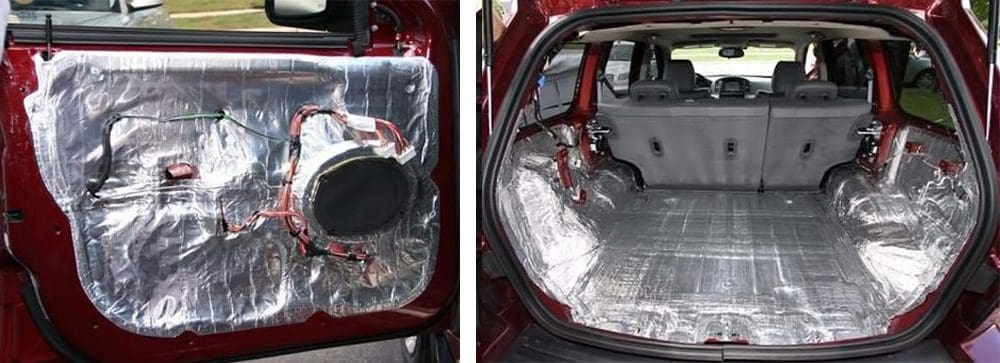
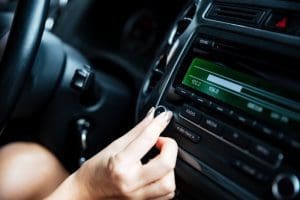 First, by simply reducing the background noise in your car or truck, you improve the effective signal-to-noise ratio of your stereo. What does this mean? Having less background noise makes it easier for you to hear the quiet parts of your music. Imagine if you were listening to a track at a volume level of 100dB. If you have background noise level of 95 dB, any portion of the song that is around the 95dB level will have to battle with the background noise to be heard. If you can reduce the noise level in your car to 90 dB, you can hear more of your music.
First, by simply reducing the background noise in your car or truck, you improve the effective signal-to-noise ratio of your stereo. What does this mean? Having less background noise makes it easier for you to hear the quiet parts of your music. Imagine if you were listening to a track at a volume level of 100dB. If you have background noise level of 95 dB, any portion of the song that is around the 95dB level will have to battle with the background noise to be heard. If you can reduce the noise level in your car to 90 dB, you can hear more of your music.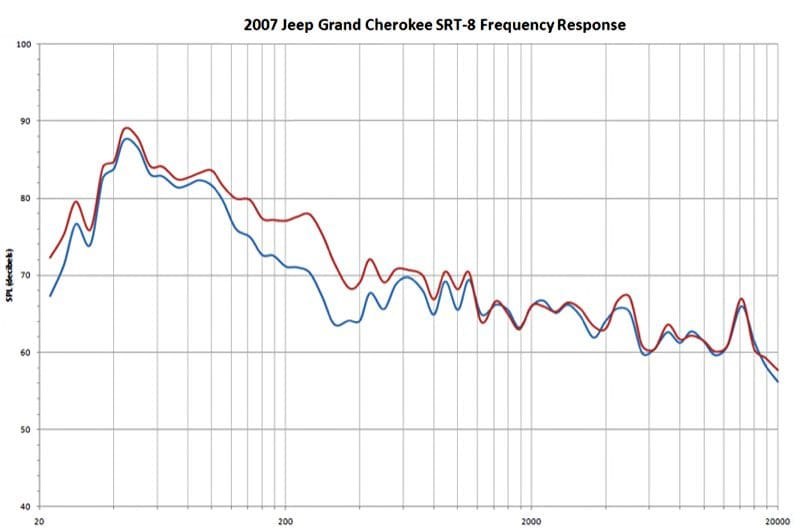
 If you watch TV shows like “Detroit Muscle,” “Truck Tech” or “Overhaulin’,” you’ve undoubtedly seen the guys apply a thorough layer of sound deadening material to the floor of some of the coolest hot rods ever. Not only do these materials help keep your vehicle quiet, but they also help block heat from the road, engine, transmission and exhaust from heating up the interior of your vehicle. Dynaliner from Dynamic Control of North America, D-Mat from Design Engineering and the aptly named Heat Barrier from Thermo-Tec are specifically designed to prevent heat transfer into the interior of your vehicle.
If you watch TV shows like “Detroit Muscle,” “Truck Tech” or “Overhaulin’,” you’ve undoubtedly seen the guys apply a thorough layer of sound deadening material to the floor of some of the coolest hot rods ever. Not only do these materials help keep your vehicle quiet, but they also help block heat from the road, engine, transmission and exhaust from heating up the interior of your vehicle. Dynaliner from Dynamic Control of North America, D-Mat from Design Engineering and the aptly named Heat Barrier from Thermo-Tec are specifically designed to prevent heat transfer into the interior of your vehicle.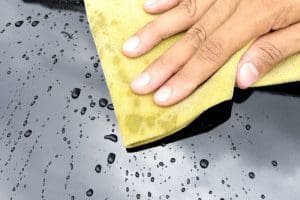 There are two common problems that occur with damping materials. First, they simply may not have a strong adhesive or they require extensive surface preparation to stay adhered to a panel. Some damping materials will stick to slightly dusty surfaces without any problems. The second and more important concern is that the material itself is thermally stable. You don’t want the deadening to peel off when it gets hot in the summer. We’ve heard of many cases where vehicle carpets and headliners have needed to be replaced because damping materials turned to a liquid and contaminated them.
There are two common problems that occur with damping materials. First, they simply may not have a strong adhesive or they require extensive surface preparation to stay adhered to a panel. Some damping materials will stick to slightly dusty surfaces without any problems. The second and more important concern is that the material itself is thermally stable. You don’t want the deadening to peel off when it gets hot in the summer. We’ve heard of many cases where vehicle carpets and headliners have needed to be replaced because damping materials turned to a liquid and contaminated them.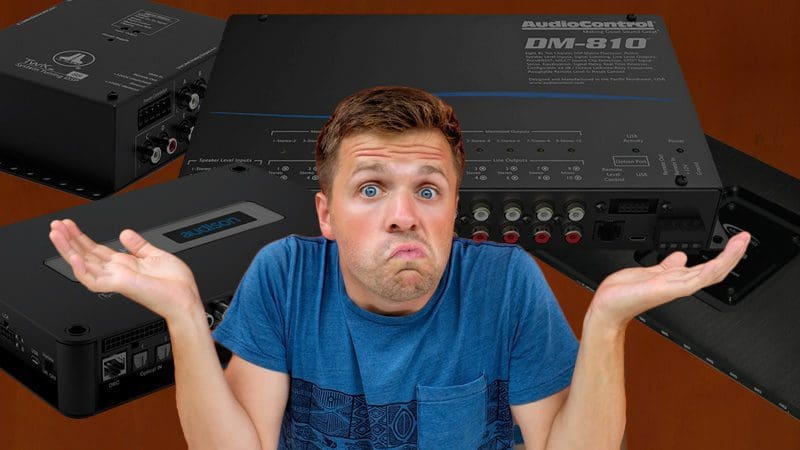
 In a nutshell, a DSP uses a microcontroller that is designed specifically to manipulate audio signals in the digital domain. Pretty much all of the DSP devices on the market include crossovers, equalizers and signal delay features that we can use to optimize the performance of your sound system.
In a nutshell, a DSP uses a microcontroller that is designed specifically to manipulate audio signals in the digital domain. Pretty much all of the DSP devices on the market include crossovers, equalizers and signal delay features that we can use to optimize the performance of your sound system. At the simplest level, a DSP can be considered a glorified yet extremely precise tone control. When you combine the features of a processor with measurements from a real-time analyzer, a properly trained technician can dramatically improve the tonal balance and accuracy of your audio system. Vocals and instruments will sound more as though you are in the presence of a live performance as opposed to listening to a recording. Expert technicians can use stereo equalization to improve the staging and imaging characteristics of your sound system, helping to increase the realism of the listening experience further.
At the simplest level, a DSP can be considered a glorified yet extremely precise tone control. When you combine the features of a processor with measurements from a real-time analyzer, a properly trained technician can dramatically improve the tonal balance and accuracy of your audio system. Vocals and instruments will sound more as though you are in the presence of a live performance as opposed to listening to a recording. Expert technicians can use stereo equalization to improve the staging and imaging characteristics of your sound system, helping to increase the realism of the listening experience further.
 Let’s continue with our three-way system example. In many systems, the tweeters are mounted at the top of the door, in the sail panel, in the dash or on the A-pillar. Midrange drivers in a system like that are typically 6.5 inches in diameter and are installed in the factory door location. Finally, woofers typically require an enclosure and are mounted in the trunk, cargo area or under the rear seat of a pickup truck. The distance between the listener and each speaker is different, as is the difference between the left and right speakers. These pathlength differences result in us hearing the closest speaker first, which makes our minds think that that is the source of the majority of what we are hearing.
Let’s continue with our three-way system example. In many systems, the tweeters are mounted at the top of the door, in the sail panel, in the dash or on the A-pillar. Midrange drivers in a system like that are typically 6.5 inches in diameter and are installed in the factory door location. Finally, woofers typically require an enclosure and are mounted in the trunk, cargo area or under the rear seat of a pickup truck. The distance between the listener and each speaker is different, as is the difference between the left and right speakers. These pathlength differences result in us hearing the closest speaker first, which makes our minds think that that is the source of the majority of what we are hearing.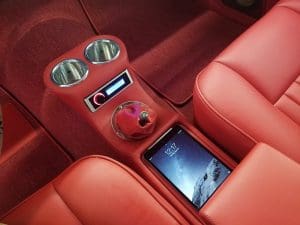
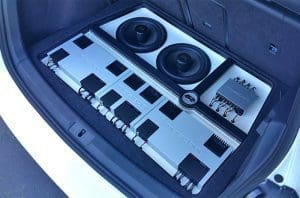 Well, yes and no. Good quality processors start around $400 plus installation and require at least an hour to configure in most vehicles. If you have a complex multi-channel system, you may need a DSP with more input and output channels and additional time to configure the system in your vehicle.
Well, yes and no. Good quality processors start around $400 plus installation and require at least an hour to configure in most vehicles. If you have a complex multi-channel system, you may need a DSP with more input and output channels and additional time to configure the system in your vehicle. If you are like most people, you may think that your local car stereo shop specializes in custom audio systems, speaker replacements and, if they have marketed themselves well, remote car starter installations. The reality is, many mobile enhancement retailers offer a variety of automotive enhancement services that extend well beyond audio system sales and service. Let’s have a look at some of the service options that don’t get talked about as often. (Editor’s note: Not all of these services are available at every mobile enhancement retailer.)
If you are like most people, you may think that your local car stereo shop specializes in custom audio systems, speaker replacements and, if they have marketed themselves well, remote car starter installations. The reality is, many mobile enhancement retailers offer a variety of automotive enhancement services that extend well beyond audio system sales and service. Let’s have a look at some of the service options that don’t get talked about as often. (Editor’s note: Not all of these services are available at every mobile enhancement retailer.) Many new cars and trucks come from the dealership with advanced collision avoidance technologies. The most basic is a rear-vision camera system or parking sensor system that can alert you to the presence of an object or person while maneuvering your vehicle. If your vehicle doesn’t have a backup camera or parking sensors, a system can be added quite easily.
Many new cars and trucks come from the dealership with advanced collision avoidance technologies. The most basic is a rear-vision camera system or parking sensor system that can alert you to the presence of an object or person while maneuvering your vehicle. If your vehicle doesn’t have a backup camera or parking sensors, a system can be added quite easily.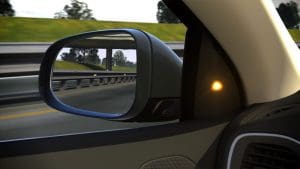 In the same vein as the parking sensors, an aftermarket blind-spot monitoring system will alert you to the presence of a vehicle or object beside or just behind yours. When an object enters this space, a small indicator will illuminate to alert you to an object in your blind spot. If you activate the turn signal, an audible warning will be produced to let you know that someone is there.
In the same vein as the parking sensors, an aftermarket blind-spot monitoring system will alert you to the presence of a vehicle or object beside or just behind yours. When an object enters this space, a small indicator will illuminate to alert you to an object in your blind spot. If you activate the turn signal, an audible warning will be produced to let you know that someone is there.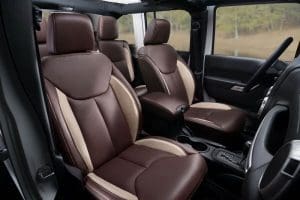 If you have an older vehicle or are interested in changing the look of your interior, your local mobile electronics specialist retailer can provide you with a complete custom interior. Companies like Katzkin, Leatherseats.com and Roadwire offer vehicle-specific seating upholstery in a variety of colors and patterns, including your choice of thread color. They can often embroider a logo into the upholstery if you wish. Many shops can also swap out the carpet in your vehicle with a new custom-molded piece in a variety of colors to complete the transformation.
If you have an older vehicle or are interested in changing the look of your interior, your local mobile electronics specialist retailer can provide you with a complete custom interior. Companies like Katzkin, Leatherseats.com and Roadwire offer vehicle-specific seating upholstery in a variety of colors and patterns, including your choice of thread color. They can often embroider a logo into the upholstery if you wish. Many shops can also swap out the carpet in your vehicle with a new custom-molded piece in a variety of colors to complete the transformation. Who better to install aftermarket
Who better to install aftermarket  A variety of new vehicles are still available without cruise control. Whether you have a classic car with a carburetor, a new vehicle with drive-by-wire throttle or something in between, aftermarket cruise control solutions are available to make your next long-distance trip a lot more comfortable.
A variety of new vehicles are still available without cruise control. Whether you have a classic car with a carburetor, a new vehicle with drive-by-wire throttle or something in between, aftermarket cruise control solutions are available to make your next long-distance trip a lot more comfortable. Are you in the market for a set of side-steps, a new toolbox for the truck bed, a new tonneau cover or an off-road-ready grille guard? Drop by your local mobile enhancement retailer. In addition to being experts at automotive electrical systems, most shops have the tools and experience required to install a variety of truck accessories.
Are you in the market for a set of side-steps, a new toolbox for the truck bed, a new tonneau cover or an off-road-ready grille guard? Drop by your local mobile enhancement retailer. In addition to being experts at automotive electrical systems, most shops have the tools and experience required to install a variety of truck accessories.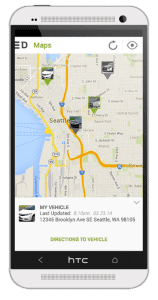 If you want to know where your vehicle or fleet of vehicles is at all times, a
If you want to know where your vehicle or fleet of vehicles is at all times, a  Do you have a power window that won’t roll down, a door that doesn’t lock when you press the button on your remote, or an intermittent instrument cluster? The advanced troubleshooting experience that most mobile electronics technicians possess far exceeds that of some dealership service centers. If there is something electrical or electronic not working on your vehicle, drop by and see if they can help.
Do you have a power window that won’t roll down, a door that doesn’t lock when you press the button on your remote, or an intermittent instrument cluster? The advanced troubleshooting experience that most mobile electronics technicians possess far exceeds that of some dealership service centers. If there is something electrical or electronic not working on your vehicle, drop by and see if they can help. If you live in a state or province that allows the use of radar detectors, the team at your local car stereo shop is far and away the best choice to integrate a premium system into your vehicle. Custom installed radar detectors and laser defense systems provide early warning against police radar and can delay laser measurement devices from obtaining a speed reading.
If you live in a state or province that allows the use of radar detectors, the team at your local car stereo shop is far and away the best choice to integrate a premium system into your vehicle. Custom installed radar detectors and laser defense systems provide early warning against police radar and can delay laser measurement devices from obtaining a speed reading.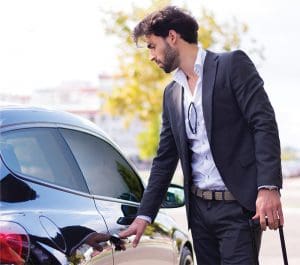 Having the windows of your vehicle tinted does a lot more than simply change the style of your vehicle. Window films block almost all of the ultraviolet energy from the sun to protect the occupants from accelerated skin aging. Premium films offer infrared rejection properties that help to keep the interior of your vehicle cooler. Window tint can also make your vehicle safer. If you get into an accident, the resulting tiny pieces of glass will remain adhered to the film rather than flying across the vehicle. Finally, window tint can help to reduce crimes of opportunity. If someone can’t see the contents of your vehicle, there is less reason for them to break in.
Having the windows of your vehicle tinted does a lot more than simply change the style of your vehicle. Window films block almost all of the ultraviolet energy from the sun to protect the occupants from accelerated skin aging. Premium films offer infrared rejection properties that help to keep the interior of your vehicle cooler. Window tint can also make your vehicle safer. If you get into an accident, the resulting tiny pieces of glass will remain adhered to the film rather than flying across the vehicle. Finally, window tint can help to reduce crimes of opportunity. If someone can’t see the contents of your vehicle, there is less reason for them to break in.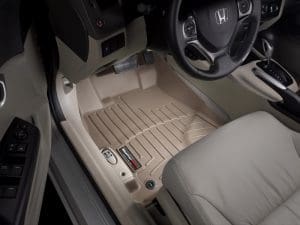 Many retailers offer automotive accessories like floor mats. One of the most popular brands in this category is WeatherTech. Their premium Floor Liner solution features a high-quality protective mat that is molded to the floor of your vehicle. The mat extends up the firewall and the center console to protect your carpet from damage, dirt and salt stains. WeatherTech also offers side window deflectors, mud flaps, bug deflectors and much more. Even if your local retailer doesn’t carry the WeatherTech brand, they should be able to source a solution to keep your vehicle looking great.
Many retailers offer automotive accessories like floor mats. One of the most popular brands in this category is WeatherTech. Their premium Floor Liner solution features a high-quality protective mat that is molded to the floor of your vehicle. The mat extends up the firewall and the center console to protect your carpet from damage, dirt and salt stains. WeatherTech also offers side window deflectors, mud flaps, bug deflectors and much more. Even if your local retailer doesn’t carry the WeatherTech brand, they should be able to source a solution to keep your vehicle looking great. Are you looking for a set of lowering springs, a computer programmer or maybe a supercharger or turbo kit? Many mobile electronics retailers have technicians available to enhance the performance of your vehicle. A bolt-on exhaust, cold-air intake, high-flow air filter or throttle body spacer can provide your vehicle with a little extra power and may improve your gas mileage at the same time.
Are you looking for a set of lowering springs, a computer programmer or maybe a supercharger or turbo kit? Many mobile electronics retailers have technicians available to enhance the performance of your vehicle. A bolt-on exhaust, cold-air intake, high-flow air filter or throttle body spacer can provide your vehicle with a little extra power and may improve your gas mileage at the same time.